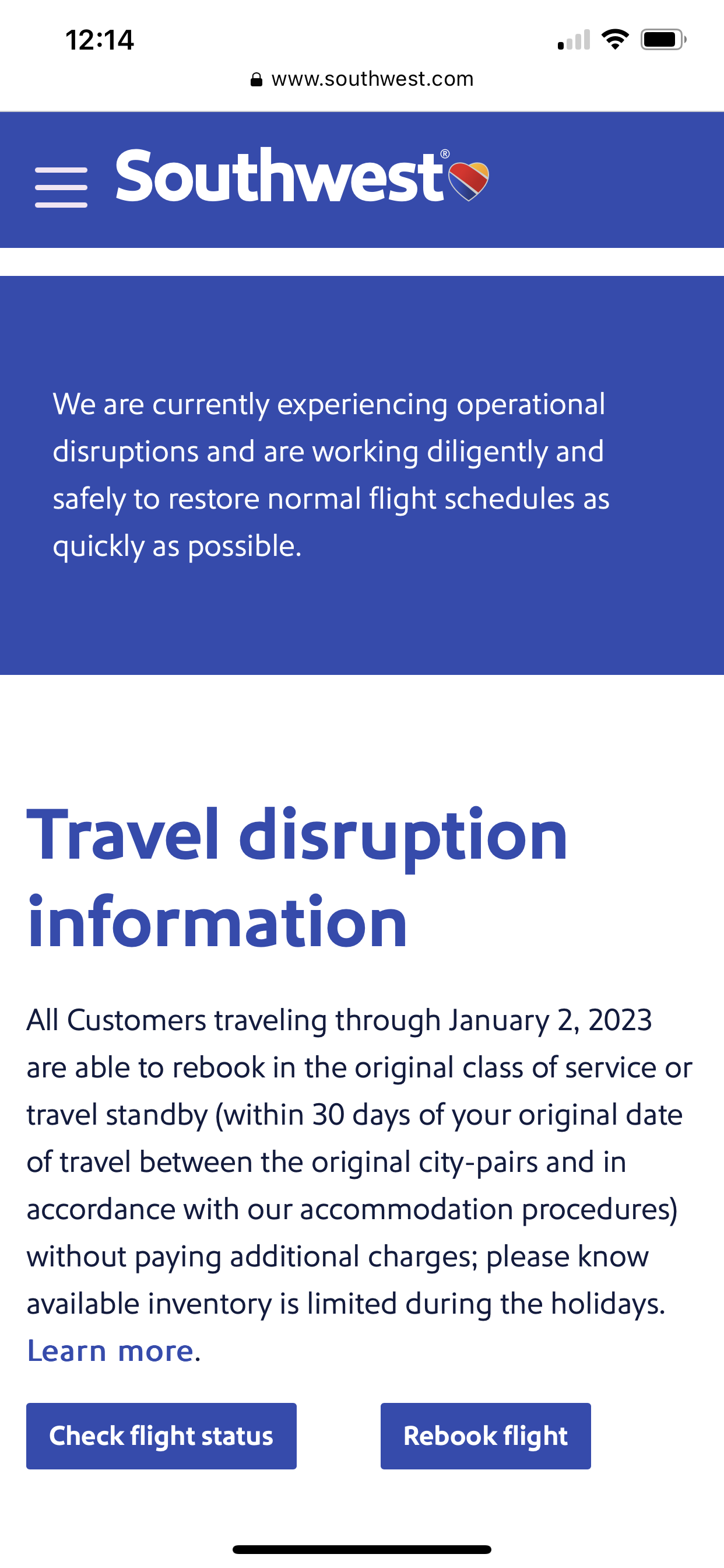Marketing Minute #1: Southwest Airlines

As someone who works in marketing and communications, I am constantly observing, screenshotting and learning from other people’s work. I often share and discuss these case studies with my team. I’ve decided to also start sharing these insights here on my blog. Whether you are a business owner or someone who works in the field - I hope that these lessons and insights are helpful for you in some capacity. Our first case study is Southwest Airlines.
Like so many, I watched the disaster unfold. Some people I know personally were impacted. Now that the dust is starting to settle and we have a little more information about what actually happened, I want to share some insights.
Recommendations for improvement:
This post spoke about customers and not to them directly. Imagine being directly impacted by the flight cancellation and then going online and seeing this. I also think that the while it was good to have the CEO on video, it was too soon to start talking about the company’s future when the crisis was still very much active.
Center those who are directly impacted and speak directly to them first. Most of the posts that I witnessed on social media spoke about the travelers who were impacted in third person. In situations of distress or crisis, I believe that it is important to center those who are most directly impacted and speak to them directly using words like “you.” It also doesn’t hurt to use words that describe how you feel abut those who are directly impacted like “valued.” The post below on Instagram, 2 days ago, adequately captures the right tone and point of view.
2. Acknowledge your awareness that there is a problem. If if you don’t know what the problem or issue is (or if you’re not ready to go public with it, yet) it is important to acknowledge that you are aware of the problem, you apologize for any inconvenience and you are working as quickly as possible to resolve the issue. When people are going through things, they need reassurance and they need to know that someone cares and is working to help them.
3. Send internal messages first to help mitigate the sharing of privileged information. Internal communications is often a forethought. It is so important to communicate with key stakeholders - including employees as early and as often as possible. Several Southwest employees were going public about software issues and labor/union issues. While Southwest was saying the issues were due to the weather, people were quickly comparing Southwest to other airlines who were not having those issues. Of course remember that any piece of internal communication can always be shared with the public. Try to layer the communications in a way where internal stakeholders receive information first and then speak to external audiences.
It is also now coming out that Southwest employees have been ringing the alarm about outdated software. Some of this was circulating on social media at the beginning of the crisis. It is so important to value and listen to employees and staff when they have complaints and raise concerns about issues. This New York Times article shares some information about that.
What Southwest did well:
Facebook messages acknowledging the problem and helping to manage expectations. The message below speaks to both customers and employees which is great. It is also great to help manage expectations by mentioning longer wait times. Letting people know how they can be helped is critical.
2. Creating a landing page to direct people to. I am certain that the volume of phone calls, emails and social media messages went up exponentially at the height of this crisis. Southwest creating a landing page with key information for travelers likely helped to reduce the volume of inquiries in other spaces. Even in a crisis, it is important to remember those who are working on the front lines and what may be needed to provide them with the support and resources that they may need.
3. Having the CEO deliver a message via video. In situations of crisis, people want to hear directly from leaders. I also believe that delivering messages in multiple ways is important and video is powerful. I’d imagine that in addition to customers, the media inquiries were also coming in. The video messages serve the dual purpose of being useful to the general public, and also helpful for media.
There will still be many more lessons and insights that we will can take away from this situation as it is far from over.



